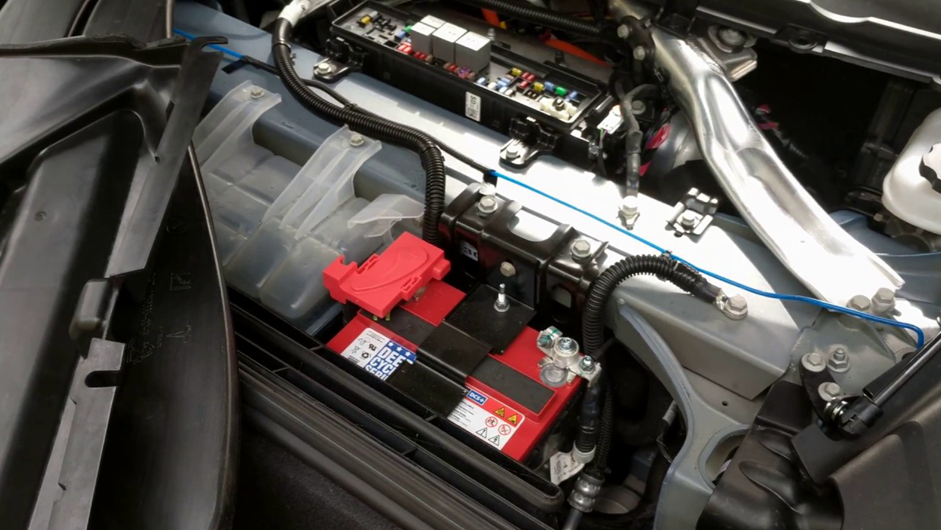Lithium Batteries Connected in Series: Understanding the Benefits and Risks
Lithium batteries have become increasingly popular due to their high energy density, long life, lightweight and low self-discharge rate. Many applications require a higher voltage than a single cell can provide, which is why lithium batteries are often connected in series. While this approach offers several benefits, it also introduces some risks that must be understood and managed.
Benefits of Connecting Lithium Batteries in Series
One of the most significant advantages of connecting lithium batteries in series is the ability to increase the voltage output. This is especially useful in applications such as electric vehicles, where a higher voltage is required to drive the motor. By connecting multiple battery cells in series, the voltage output can be increased without adding more weight or bulk to the system.
Another advantage of connecting lithium batteries in series is that it allows for higher energy storage capacity. The energy storage capacity of a battery is determined by its voltage and its capacity. Connecting multiple cells in series increases the voltage while maintaining the same capacity, resulting in a higher energy storage capacity.
Risks of Connecting Lithium Batteries in Series
While connecting lithium batteries in series offers many benefits, it also introduces some risks that must be considered. One of the most significant risks is that if one cell in the series fails, it can cause the entire battery pack to fail. This is known as a “domino effect,” where the failure of one cell causes a chain reaction that leads to the failure of the entire battery pack.
Another risk of connecting lithium batteries in series is that it can lead to uneven charging and discharging of the cells. If the cells in the series are not of the same capacity or state of charge, then some cells may become overcharged or undercharged. This can result in reduced battery life or even a safety hazard.

Managing the Risks of Connecting Lithium Batteries in Series
To manage the risks of connecting lithium batteries in series, several measures can be taken. One approach is to use battery management systems (BMS) that monitor the voltage, temperature, and state of charge of each cell in the battery pack. The BMS can detect any cells that are overcharged, undercharged, or overheating and take corrective action to prevent further damage.
Another approach is to use cells that are matched in terms of capacity and state of charge when connecting them in series. This ensures that each cell in the battery pack is charged and discharged evenly, reducing the risk of overcharging or undercharging.
Եզրակացություն
In summary, connecting lithium batteries in series offers several benefits, including increased voltage output and higher energy storage capacity. However, it also introduces some risks that must be managed, such as the potential for a domino effect if one cell fails and uneven charging and discharging of the cells. By using battery management systems and matched cells, these risks can be minimized, and the benefits of connecting lithium batteries in series can be realized.
-
 Introduction: Communication plays a vital role in our daily lives. We rely heavily on our smartphones, tablets, and other devices to stay connected with our loved ones and to access information. Behind the scenes, communication base stations serve as the backbone of our connectivity, enabling seamless network coverage. Traditionally, these base stations have been powered by diesel generators, which...Կարդալ ավելին
Introduction: Communication plays a vital role in our daily lives. We rely heavily on our smartphones, tablets, and other devices to stay connected with our loved ones and to access information. Behind the scenes, communication base stations serve as the backbone of our connectivity, enabling seamless network coverage. Traditionally, these base stations have been powered by diesel generators, which...Կարդալ ավելին -
 When it comes to enjoying a day out on the water, having a reliable and powerful battery for your boat is essential. Whether you're a seasoned sailor or a novice boater, having the right cranking battery can make all the difference in ensuring a smooth and enjoyable experience. In this article, we will discuss the importance of a good cranking...Կարդալ ավելին
When it comes to enjoying a day out on the water, having a reliable and powerful battery for your boat is essential. Whether you're a seasoned sailor or a novice boater, having the right cranking battery can make all the difference in ensuring a smooth and enjoyable experience. In this article, we will discuss the importance of a good cranking...Կարդալ ավելին -
 As a key component of electric vehicles, electric vehicle batteries have a significant impact on the performance, range and safety of electric vehicles. The following is a detailed introduction to some of the key technical points and performance characteristics of electric vehicle batteries: Battery Type Lithium-ion battery: The most common type of battery used in electric vehicles. Lithium-ion batteries have...Կարդալ ավելին
As a key component of electric vehicles, electric vehicle batteries have a significant impact on the performance, range and safety of electric vehicles. The following is a detailed introduction to some of the key technical points and performance characteristics of electric vehicle batteries: Battery Type Lithium-ion battery: The most common type of battery used in electric vehicles. Lithium-ion batteries have...Կարդալ ավելին -
 In today's fast-paced world, where every second counts, being prepared for unexpected situations is crucial. One such situation that can catch us off guard is a car battery failure. Imagine being stranded in the middle of nowhere, with no one around to help and no means of communication. This is where an emergency starter battery becomes a lifesaver. An...Կարդալ ավելին
In today's fast-paced world, where every second counts, being prepared for unexpected situations is crucial. One such situation that can catch us off guard is a car battery failure. Imagine being stranded in the middle of nowhere, with no one around to help and no means of communication. This is where an emergency starter battery becomes a lifesaver. An...Կարդալ ավելին -
 Լիթիումի երկաթի ֆոսֆատ (LiFePO4) մարտկոցները գնալով ավելի տարածված են դառնում էներգիայի պահպանման արդյունաբերության մեջ՝ իրենց գերազանց անվտանգության, երկար սպասարկման և էներգիայի բարձր խտության շնորհիվ: Ինչպես ցանկացած նոր տեխնոլոգիայի դեպքում, LiFePO4 մարտկոցների արժեքը մեծ խոչընդոտ է հանդիսացել դրանց համատարած ընդունման համար: Այնուամենայնիվ, քանի որ արտադրությունն աճել է, և մասշտաբի տնտեսությունները սկսել են սկսել, գները սկսվել են...Կարդալ ավելին
Լիթիումի երկաթի ֆոսֆատ (LiFePO4) մարտկոցները գնալով ավելի տարածված են դառնում էներգիայի պահպանման արդյունաբերության մեջ՝ իրենց գերազանց անվտանգության, երկար սպասարկման և էներգիայի բարձր խտության շնորհիվ: Ինչպես ցանկացած նոր տեխնոլոգիայի դեպքում, LiFePO4 մարտկոցների արժեքը մեծ խոչընդոտ է հանդիսացել դրանց համատարած ընդունման համար: Այնուամենայնիվ, քանի որ արտադրությունն աճել է, և մասշտաբի տնտեսությունները սկսել են սկսել, գները սկսվել են...Կարդալ ավելին -
 Էլեկտրական մեքենաները (EVs) զգալի ուշադրություն են գրավել վերջին տարիներին, քանի որ աշխարհը փնտրում է ավելի կայուն և էկոլոգիապես մաքուր տրանսպորտային այլընտրանքներ: EV-ները կենսունակ դարձնող հիմնական բաղադրիչներից մեկը լիթիումային մարտկոցն է: Լիթիումի մարտկոցը հեղափոխել է ավտոմոբիլային արդյունաբերությունը՝ ապահովելով էլեկտրական մեքենաների հուսալի և արդյունավետ էներգիայի աղբյուր: Այս հոդվածում մենք կուսումնասիրենք...Կարդալ ավելին
Էլեկտրական մեքենաները (EVs) զգալի ուշադրություն են գրավել վերջին տարիներին, քանի որ աշխարհը փնտրում է ավելի կայուն և էկոլոգիապես մաքուր տրանսպորտային այլընտրանքներ: EV-ները կենսունակ դարձնող հիմնական բաղադրիչներից մեկը լիթիումային մարտկոցն է: Լիթիումի մարտկոցը հեղափոխել է ավտոմոբիլային արդյունաբերությունը՝ ապահովելով էլեկտրական մեքենաների հուսալի և արդյունավետ էներգիայի աղբյուր: Այս հոդվածում մենք կուսումնասիրենք...Կարդալ ավելին -
 Ժամանակակից աշխարհում էլեկտրամատակարարումը մեր կյանքի կարևոր մասն է: Անկախ նրանից, թե մենք էլեկտրոնային սարքեր ենք օգտագործում տանը կամ մեր գրասենյակներում, թե աշխատում ենք հեռավոր վայրերում, մեզ անհրաժեշտ է էներգիայի հուսալի աղբյուր, որը կարող է ապահովել երկարատև աջակցություն: Այստեղ գործի է դրվում LiFePO4 մարտկոցը: Դա շատ արդյունավետ և հուսալի մարտկոց է, որը կարող է...Կարդալ ավելին
Ժամանակակից աշխարհում էլեկտրամատակարարումը մեր կյանքի կարևոր մասն է: Անկախ նրանից, թե մենք էլեկտրոնային սարքեր ենք օգտագործում տանը կամ մեր գրասենյակներում, թե աշխատում ենք հեռավոր վայրերում, մեզ անհրաժեշտ է էներգիայի հուսալի աղբյուր, որը կարող է ապահովել երկարատև աջակցություն: Այստեղ գործի է դրվում LiFePO4 մարտկոցը: Դա շատ արդյունավետ և հուսալի մարտկոց է, որը կարող է...Կարդալ ավելին

